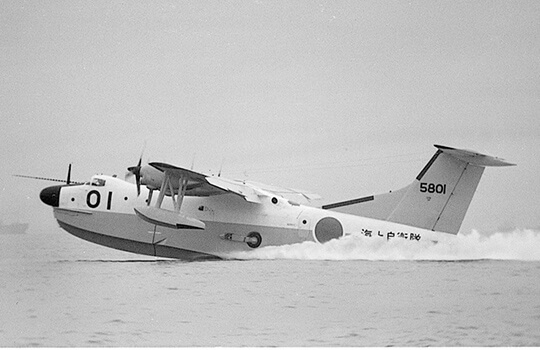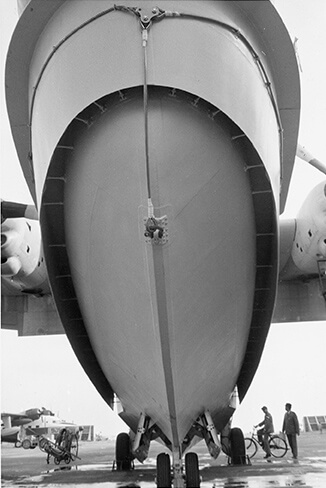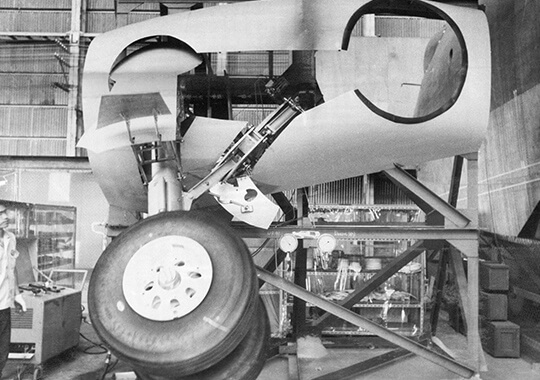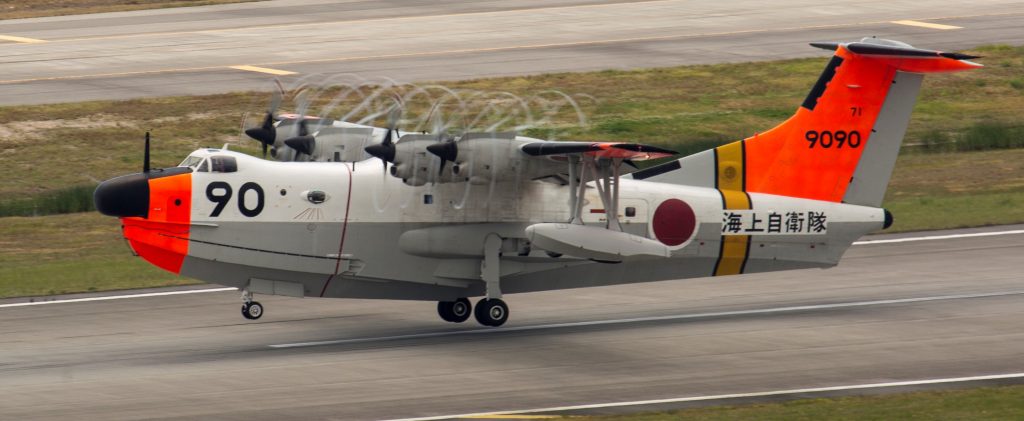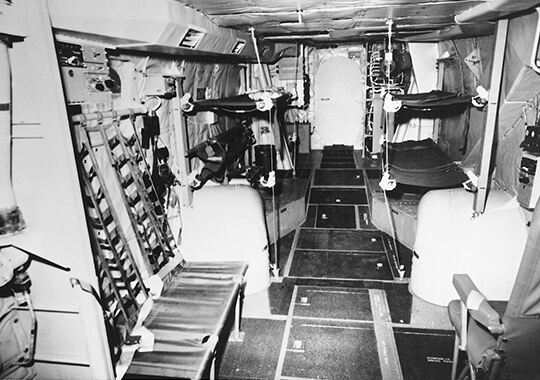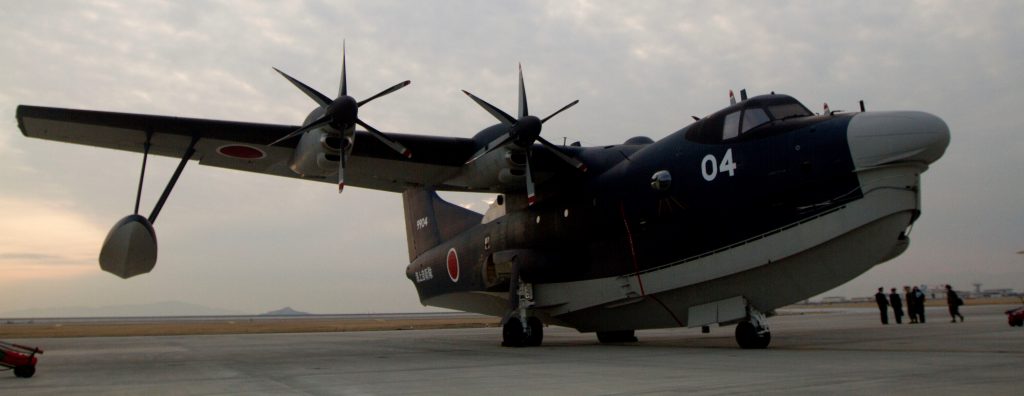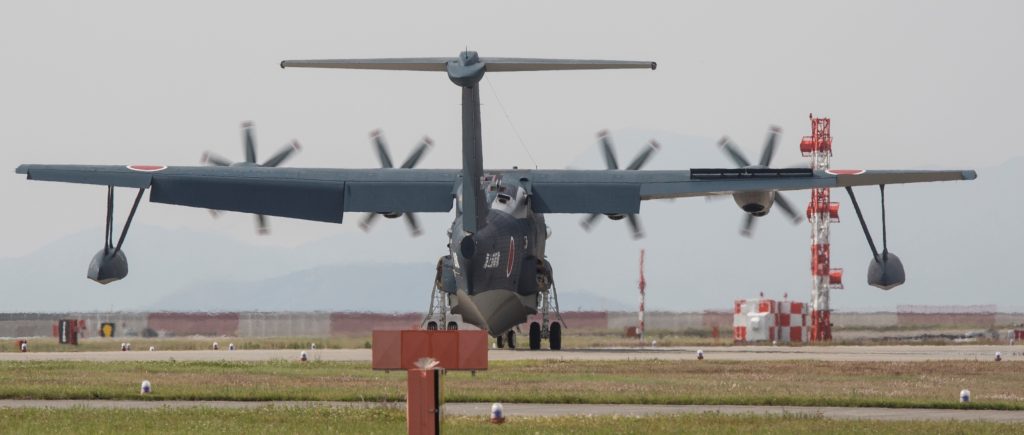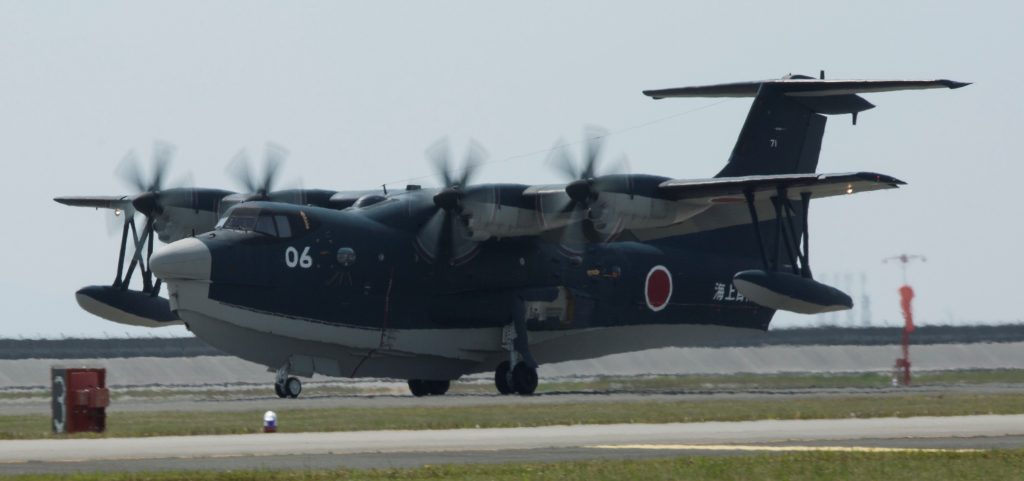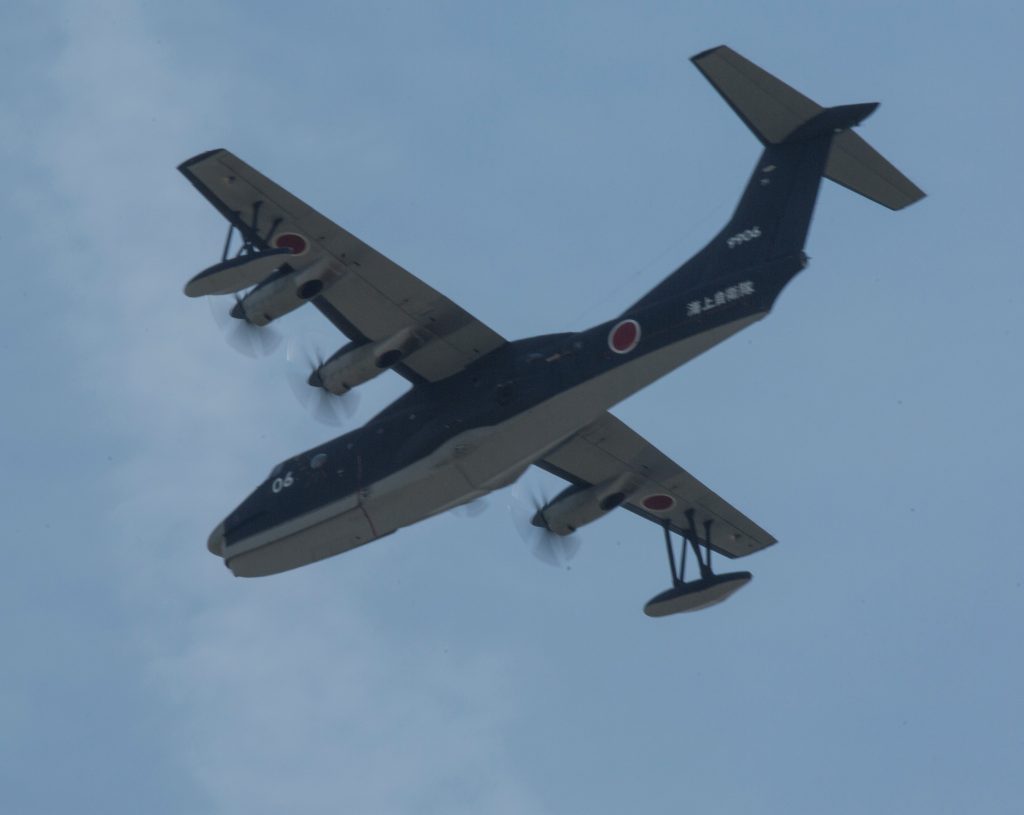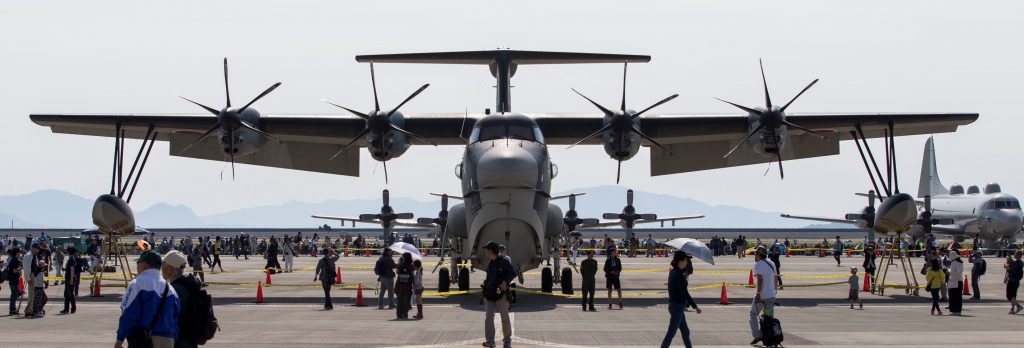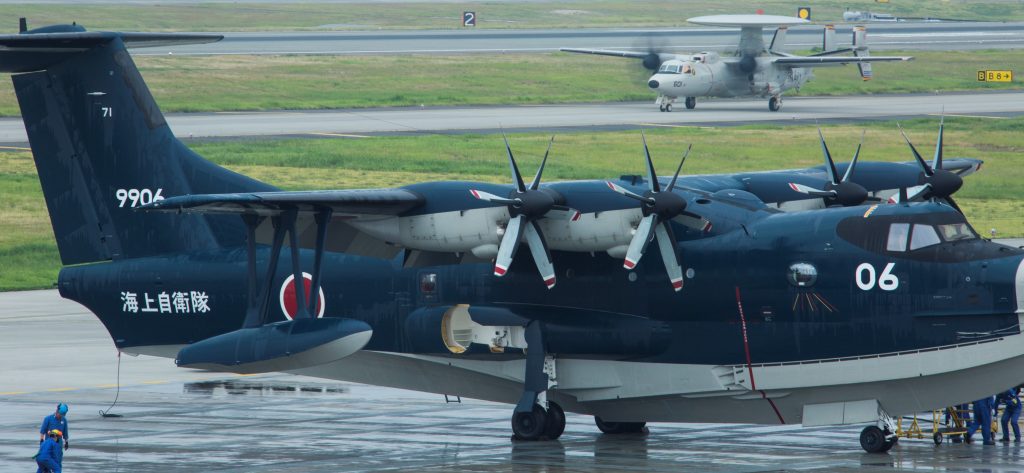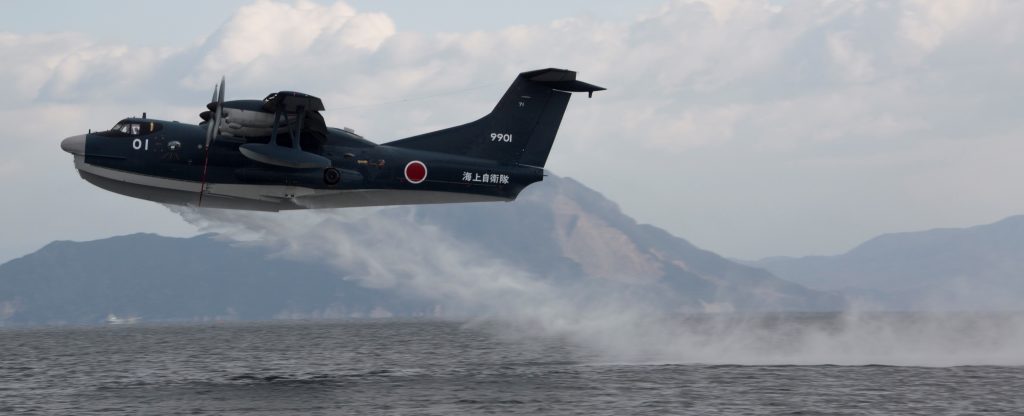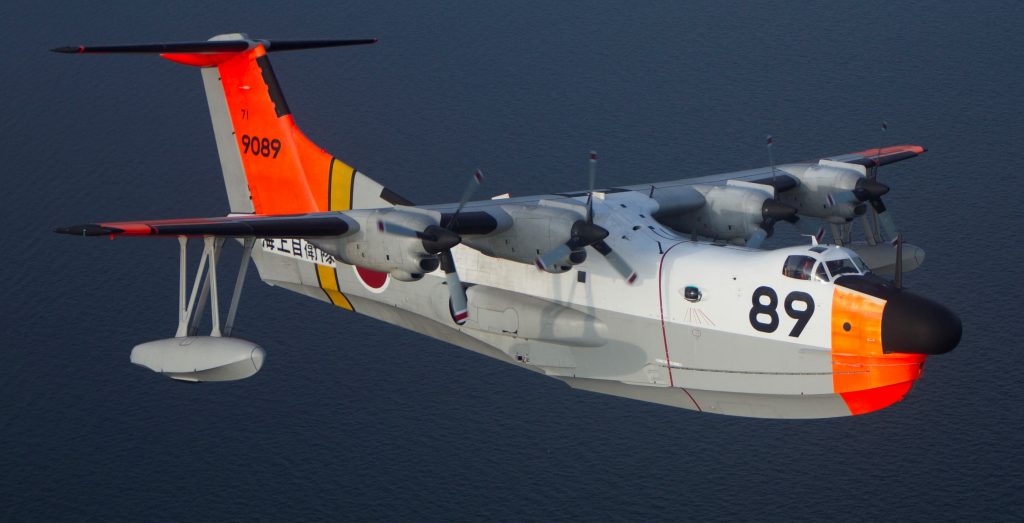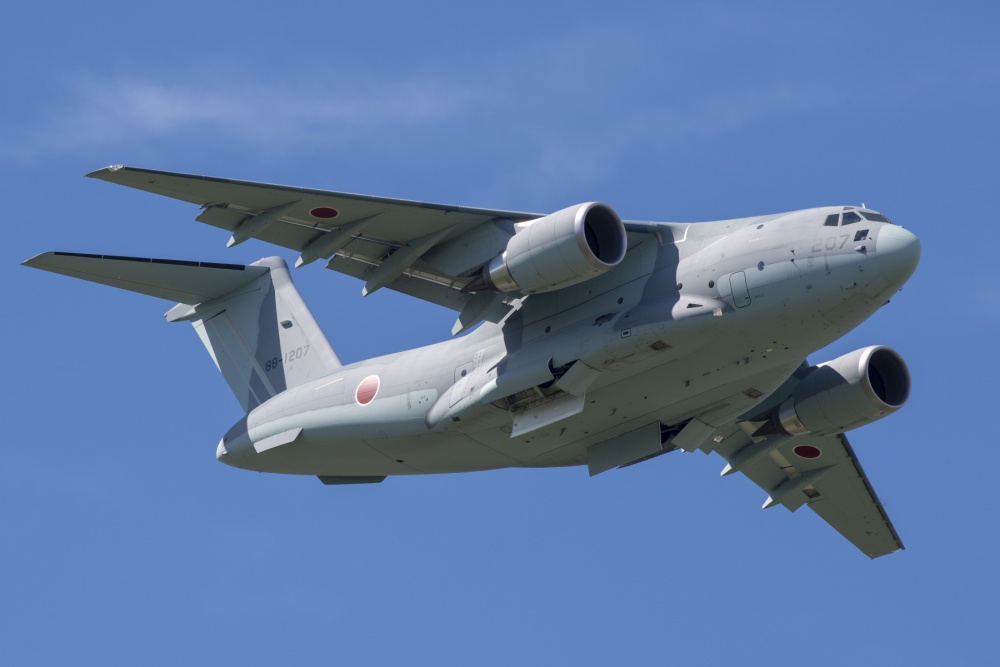Shin-Meiwa Kōgyō Kabushiki-gaisha (新明和工業株式会社), now called ShinMaywa Industries Limited, was known during World War Two as the Kawanishi Aircraft Company. During the 1950s-60s, Shin-Meiwa set to work on a new patrol flying boat for Japan, developing the PS-1 and US-1A.
ShinMaywa video, 50th Flying Boat constructed, rollout ceremony, 26NOV2020:
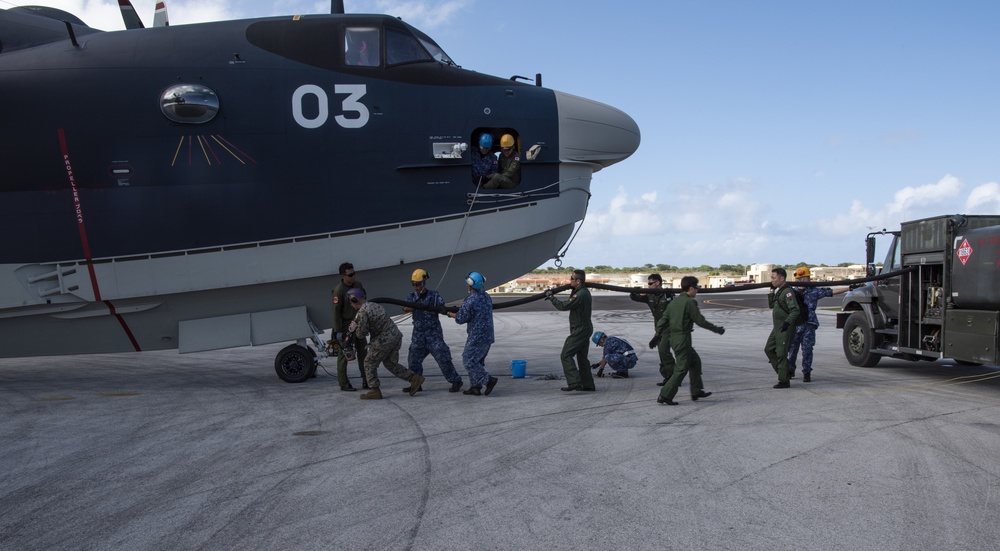
U.S. Air Force photo by Airman First Class Michael S. Murphy.
US-2 gets fueled on Anderson Air Force Base, Guam, 20FEB2020.
First flight of the prototype PX-S was in October 1967. The production Patrol Seaplane-1 (PS-1, aka SS-2) flying boat is a anti-ship combat aircraft which does not have conventional landing gear, it is not amphibious as the ‘landing gear’ is actually beaching gear (with each main gear leg having one wheel/tire) and cannot withstand the impact of landing on a runway.
ShinMaywa flying boats incorporate a ‘spray suppressor’ around the forward hull, to allow rough seas handling.

U.S. Marine Corps photo by Lance Corporal Todd F. Michalek.
In October 1974, the prototype US-1 first flew.
The US-1A (aka PS-1 Kai, aka SS-2A) is a Search And Rescue (SAR) plane that has conventional landing gear (with each main gear leg having two wheels/tires) which allows the flying boat to land on a paved runway, making it a true amphibious aircraft. The visual difference between a PS-1 and US-1 is the bulge housing the conventional type landing gear on the US-1, the PS-1 has no side fuselage bulge.
Short USMC video, by Corporal Waiyan Tin, of US-1A taking off from U.S. Marine Corps Air Station Iwakuni, 2017:

Cockpit of US-2 (US-1A Kai). USMC photo by Lance Corporal Todd F. Michalek.
In the 1980s, Japan replaced its PS-1s with Lockheed designed P-3 Orions (Kawasaki began licensed building of P-3Cs in 1978).
The US-1As were retired in 2017, replaced by the updated US-2 (prototype US-1A Kai which first flew in December 2003, and began operations as US-2 in March 2007).
The visual identifier of the upgraded US-2 (US-1A Kai) are the propellers.
USMC video by Lance Corporal Cory Schubert, US-2 (US-1A Kai), January 2015:

USMC photo by Lance Corporal Todd F. Michalek.
Warming up the modern engines of the US-2, U.S. Marine Corps Air Station Iwakuni, Japan, 08JAN2013.

USMC photo by Lance Corporal Todd F. Michalek.
Starting the old-skool three-prop engines of the US-1A, U.S. Marine Corps Air Station Iwakuni, Japan, 08JAN2013.
ShinMaywa Industries reports that as of 2020: PS-1 ASW Flying Boat 23 aircraft in total (Completed production)
US-1A SAR Flying Boat 20 aircraft in total (Completed production)
US-2 SAR Flying Boat 7 aircraft in total (in production)
ShinMaywa video documentary, history of the company:
MITSUBISHI F-2, SURE LOOKS LIKE AN F-16
2016: RUSSIA DELIVERS KC-130J SIMULATOR TO MCAS Iwakuni!

